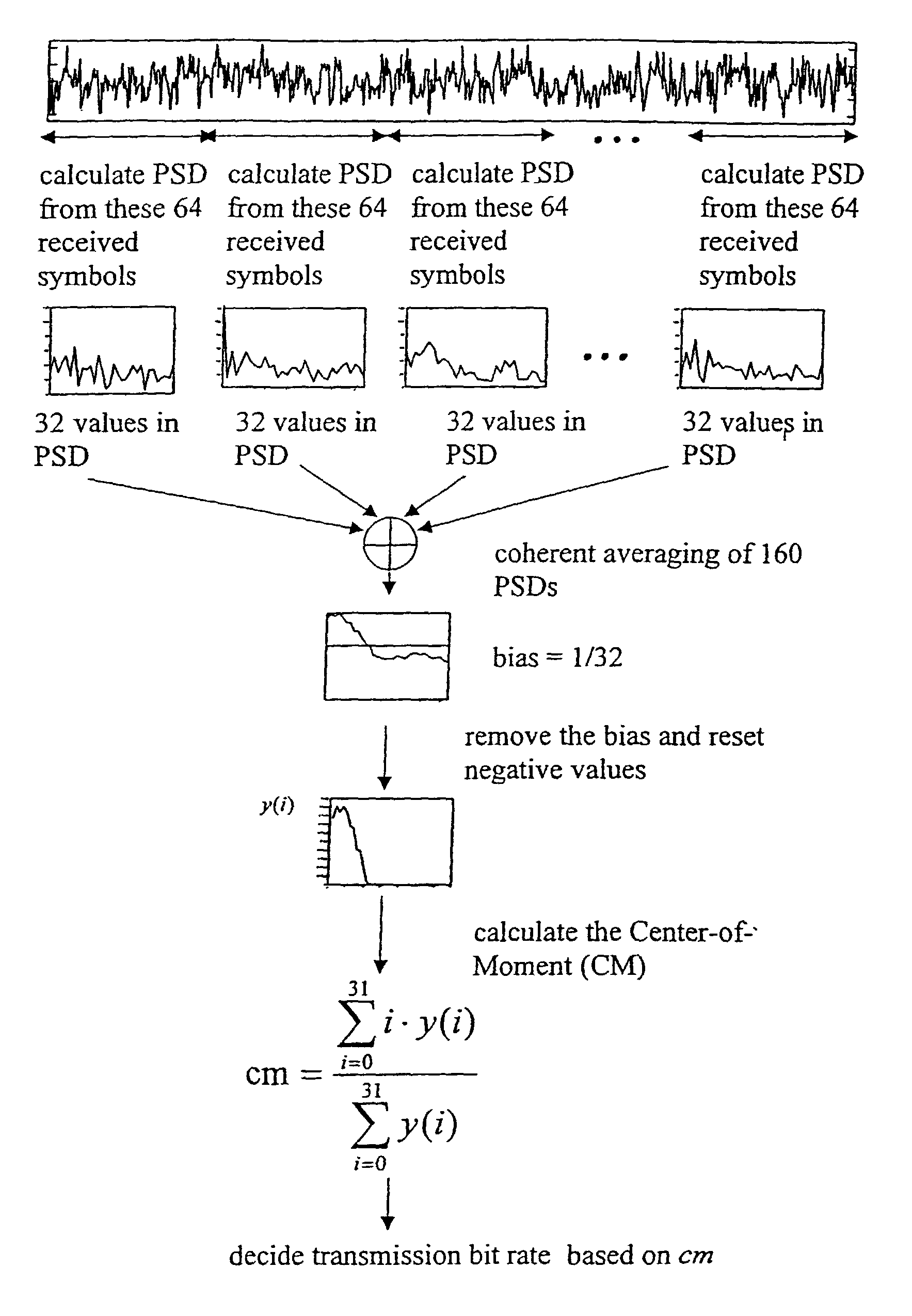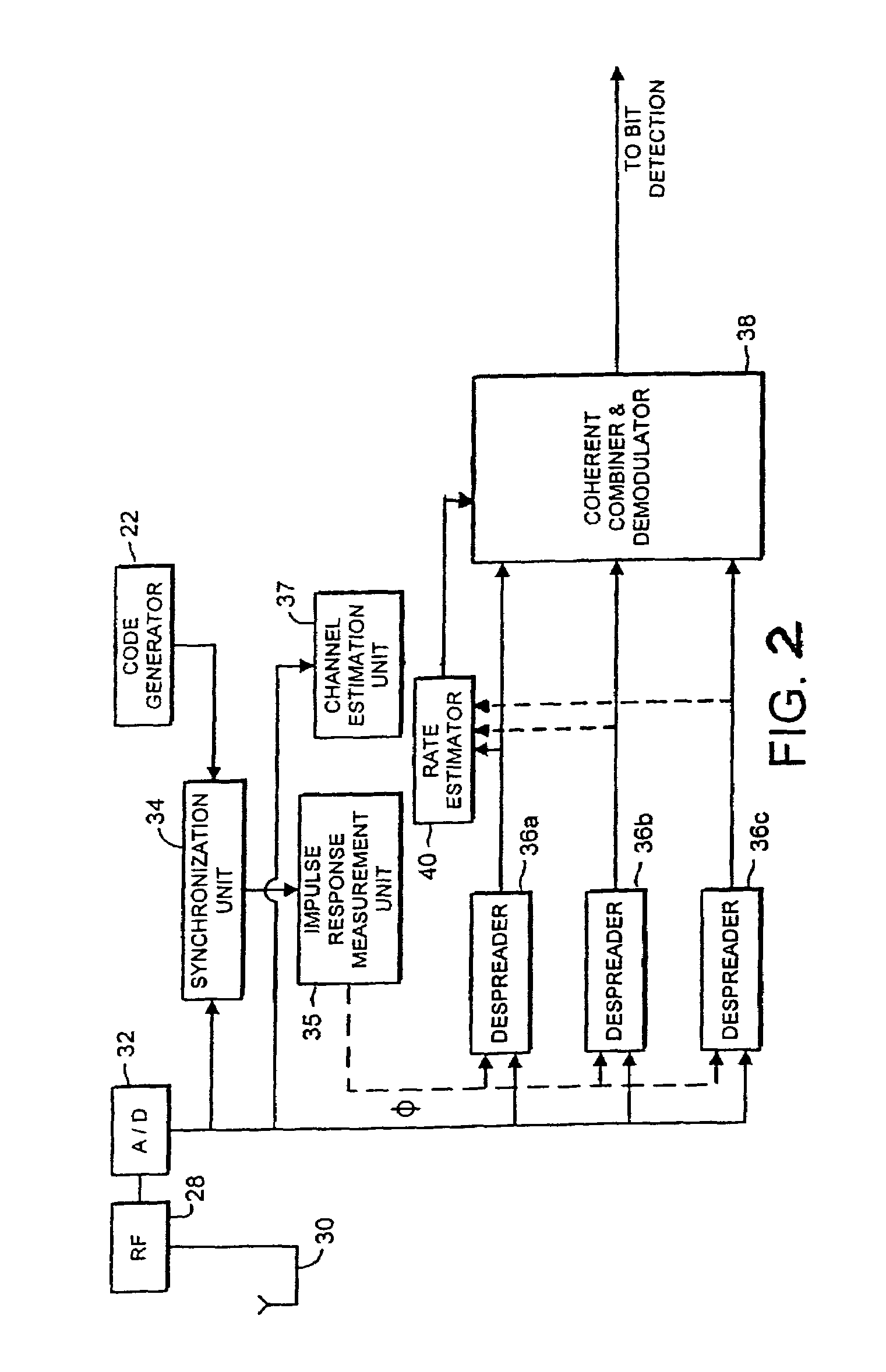Determination of data rate, based on power spectral density estimates
a data rate and power spectral density technology, applied in pulse techniques, transmission monitoring, baseband system details, etc., can solve the problems of computational complexity, decrement of the performance of data symbol power estimation, and very dominant noise in the detection process, so as to reduce the snr (signal-to-noise ratio) fluctuation. the effect of sensitiv
- Summary
- Abstract
- Description
- Claims
- Application Information
AI Technical Summary
Benefits of technology
Problems solved by technology
Method used
Image
Examples
Embodiment Construction
[0027]FIG. 1 is a block diagram illustrating a context in which the present invention may be used. That is, a CDMA mobile communication system allows a plurality of mobile stations MS1, MS2, MS3 to communicate with a base (transceiver) station BTS in a common cell via respective channels CH1, CH2, CH3. These channels are distinguished from one another by the use of scrambling codes in a manner which is know per se. FIG. 2 is a block diagram of a receive circuitry at a base station in a WCDMA system (Wideband CDMA). The receive circuitry of FIG. 2 is for use in uplink direction, i.e. for receiving signals from the mobile stations (MS). It is noted that even though the actual receive circuitry implementation in the downlink direction, i.e. at the mobile station, can be somewhat different, the invention is applicable to downlink transmissions as well.
[0028]Before describing the exemplifying receiving circuitry of FIG. 2 in more detail, a transmit circuitry (not shown) within a transmit...
PUM
 Login to View More
Login to View More Abstract
Description
Claims
Application Information
 Login to View More
Login to View More - R&D
- Intellectual Property
- Life Sciences
- Materials
- Tech Scout
- Unparalleled Data Quality
- Higher Quality Content
- 60% Fewer Hallucinations
Browse by: Latest US Patents, China's latest patents, Technical Efficacy Thesaurus, Application Domain, Technology Topic, Popular Technical Reports.
© 2025 PatSnap. All rights reserved.Legal|Privacy policy|Modern Slavery Act Transparency Statement|Sitemap|About US| Contact US: help@patsnap.com



